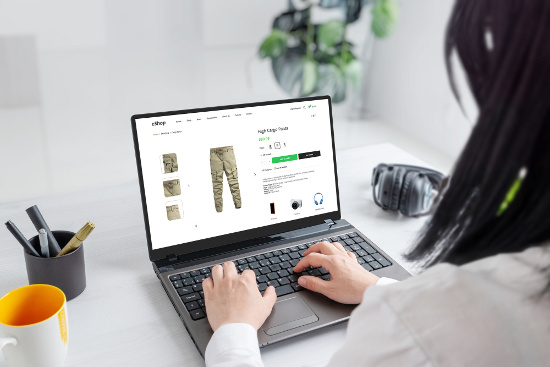Every day, thousands of visitors buzz around your virtual shelves. Success is within reach, but there’s a catch: your sales chart is as flat as a pancake. It’s similar to hosting a party where all the guests attend, but no one purchases drinks.
You may believe that traffic is the key to success. More visitors must imply more sales, right? But consider this: You may lead a horse to water, but you can’t force it to buy those fashionable boots you’re selling. This is where conversion rate optimization (CRO) enters the picture.

A top-notch CRO agency knows that boosting your conversion rate isn’t merely about getting more people to check out your stuff. Conversion rate optimization is about making those eyes sparkle with the fierce determination to purchase.
While it’s true that all traffic is equal, let’s not forget that some types of traffic hold greater priority than others. It’s likely obvious by now that not every customer who walks through your doors intends to make a purchase. Some individuals may simply be browsing online.
CRO aims to increase the percentage of visitors who can make a transaction. Its primary objective is to increase sales by making it simple and secure for buyers to complete their purchases. Here are a few CRO tactics for e-commerce success:
1. Understand CRO
CRO is the process of improving your e-commerce website or landing page. You can apply various approaches to increase the percentage of visitors that buy, sign up, or subscribe.

You can follow these strategies:
- Assess Your Conversion Funnel: Examine each conversion funnel stage to determine where and why visitors leave. Track key metrics, like bounce rate, exit pages, and time on page, to identify problem areas.
- Establish Specific Goals: Clearly define the actions you want website visitors to take. Whether completing a purchase, signing up for a newsletter, or downloading an eBook, having specific goals helps you focus on your optimization efforts.
- Understand Your Target Audience: Recognize your target audience’s needs, pain points, and preferences. Conduct customer surveys, gather feedback, and analyze data to gain insights into their behavior and tailor your CRO strategies accordingly.
Improving the user experience can help convert more visitors into customers and increase revenue.
2. Analyze User Behavior
Begin by examining the data on your website. Use analytics tools to identify patterns and improvement areas. Monitoring metrics can help identify bottlenecks in the conversion funnel, like bounce rate, exit pages, and click-through rates. You can use heatmaps and user recordings to gain insights into user behavior and identify friction points.
Here’s how to analyze user behavior:
- Heatmaps and User Recordings: Heatmaps are visual representations of user behavior on your website, indicating areas of high engagement and drop-offs. User recordings allow you to observe how visitors interact with your website, providing valuable insights into their interactions.
- Determine Friction Points: Look for elements causing confusion or frustration, like unclear call-to-action buttons, lengthy forms, or slow-loading pages. Address these issues to improve the user experience.
Understanding how users interact with your website allows you to make informed decisions about improving their experience.
3. Streamline The Checkout Process
Cart abandonment is a primary source of concern for many e-commerce businesses. Optimizing your checkout process can help reduce friction and increase conversion. Implement guest checkout options to make the purchasing process easier for first-time buyers.
Here’s how:
- Guest Checkout Option: Many customers prefer not to create an account while shopping. Provide a guest checkout option to remove barriers and increase conversions.
- Payment Methods: Adopt various payment methods to accommodate different customer preferences. Credit cards, digital wallets, and buy-now-pay-later services fall into this category.
- Progress Indicators: Display the steps involved in the checkout process to customers.
- Trust Signals: Show trust indicators, like SSL certificates, security badges, and payment icons, to reassure customers that their personal information is secure.
Use progress indicators and trust signals, like security badges and customer reviews, to instill trust in purchasing.
4. Mobile Optimization

Optimize the design and layout of your website for smaller screens to ensure easy navigation and readability. Here’s how:
- Create your website with a mobile-first mindset, prioritizing the needs and preferences of mobile users.
- Ensure your website’s layout adjusts to fit different screen sizes, providing a consistent experience.
- Use Accelerated Mobile Pages (AMP) to build lightning-fast mobile pages to reduce load times and improve mobile SEO rankings.
Implement mobile-specific features, like call-to-action buttons and mobile payment options, to improve user experience and increase conversions.
5. Exit-Intent Popups And Lead Capture
Use exit-intent popups to capture leads and potentially convert abandoning visitors when users intend to leave your website. You can provide special discounts, free resources, or exclusive content in exchange for their email addresses. You can then re-engage them via email marketing campaigns.
On the other hand, leveraging customer data and behavior can help you deliver personalized experiences. Use recommendation engines to nudge relevant products based on a customer’s browsing and purchasing history. Personalization can increase engagement and conversion rates by creating a sense of exclusivity and relevance.
6. Establish Trust
Showcase social proof, like customer reviews, ratings, and testimonials, to build trust with potential customers. Highlight positive feedback and user-generated content to build credibility and reassure hesitant buyers.
Provide exceptional customer service via live chat to address questions or concerns immediately. A live chat feature can boost customer confidence and encourage them to purchase because they know help is available.
Conclusion
Mastering conversion rate optimization requires a data-driven approach and a thorough understanding of your audience’s behavior. Test, refine, and improve your e-commerce website to provide a seamless experience.
If your online store floods with visitors but not sales, it’s time to step back. Before allocating funds to drive more traffic, you can invest time understanding your customers. After all, a busy store is meaningless if the cash register is silent.



